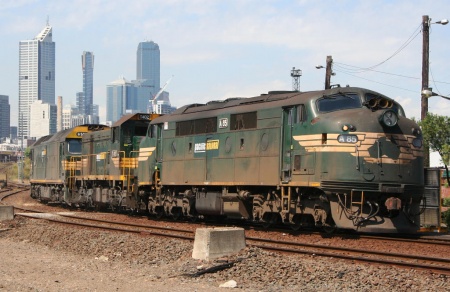"Throttle-power" container
From TrainzOnline
Parent Class
The Throttle-power container is a top-level Enginespec config.txt file entry used by KIND Engine assets.
Supported Tags
The Throttle-power container has a sequence of numeric subcontainers. Each one refers to a specific throttle notch.
- {the set:0,1,2,…, 6, 7} for diesels and {0, 1, …, 30, 31} for electric powered locos. (note the base-zero numbered sequences)
Within each subcontainer, there are a series of numeric named lines. Each line specifies a speed (m/s) and a tractive effort (kiloNewtons (kN)) value. Together, these points define a tractive effort graph for a specific throttle notch.
Example throttle-power container
Here is an example throttle-power container. (Several notches have been omitted for brevity - the format is identical throughout).
throttle-power
{
0
{
0 0
}
1
{
0 165
2.2 83
4.4 55
6.6 41
8.8 33
13.0 0
}
...
...
...
8
{
0 1320
2.2 800
4.4 750
5.5 700
6.6 480
8.8 250
11.25 200
13.3 195
28.5 190
30.0 26
31.0 0
}
}

Weight is a force which depends on the part of the mass bearing straight down in a gravitational field. When the surface is inclined, that part of the weight at right angles to the track/surface, called the normal component or force diminishes as some of it now acts downhill which we sometimes call dead-weight, and that component now has to be lifted while friction, declines as the normal force declines.
- Note that in the example's figures the high notch thrust values are way beyond what the loco can actually thrust against the track at low speeds - in other words, this loco cannot be opened up to full throttle at very low speeds, otherwise it's wheels will slip.
- The maximum tractive effort a locomotive engine can put onto the rails before slipping is configured in the loco config file—the reason for this is that the weight of the loco (also set in the loco config file) will affect this value since frictional force opposes slippage and friction is directly dependent upon the 'Normal Force' exerted by a mass on a surface.
- As the slope of a grade increases it affects (diminishes) the component of the normal force producing friction against the rails. With a diminished frictional coefficient the tendency to slip increases proportionally to the sine of the angle of pitch of the grade.
- It is a well known factor of pragmatic rail operations that traincars have less braking ability or can only apply reduced tractive effort on grades. The decline in the Normal Force with an increase in grade is why friction is commensurately reduced, and wheel slippage commensurately is more likely. Similarly, lubrication of the rails reduces frictional forces in a foul weather situation, again reducing braking ability and allowable pre-slip traction.
- See also: Defining Tractive Effort on Wikipedia.
